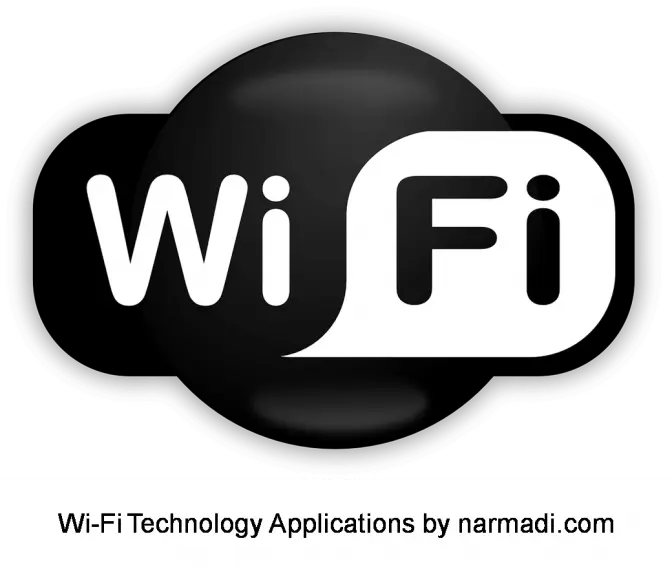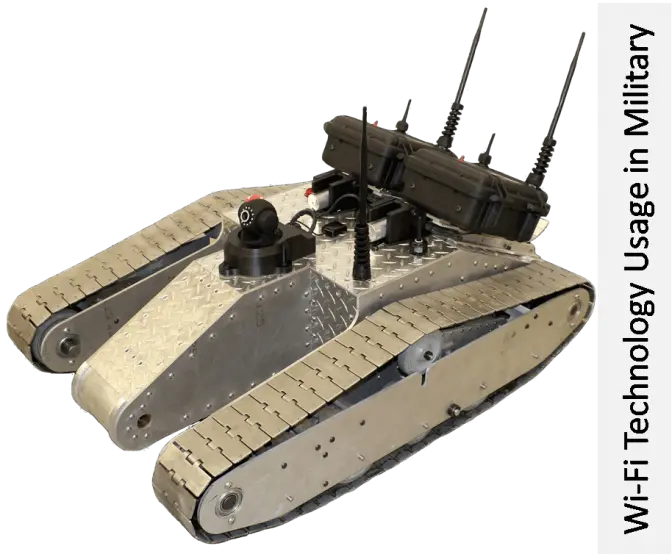Wi-Fi Technology Application – It is generally known that the trend in data transfer has moved so fast. A couple years before, we might find the application of wired data transfer were so popular. But, with advanced research and development conducted by many technological entities, which seems to results various new inventions, this thing seems to change a lot.
In data transfer especially, we can find many technological jumps. For example, now we know the term of wireless connection, which is a connection that can be done without the needs of electrical conductor.
Yes, without any electrical conductor, or wire-less. And one of the popular examples of this connection is Wi-Fi. Wi-Fi technology is the common wireless technology used in many aspects of life. With many benefits it offers, this kind of technology can be easily adopted by various applications.
Wi-Fi technology applications is progressing rapidly. From IT industry to some fields that we’ve never imagined before like agriculture, housing, security, and many more. Those are now implementing Wi-Fi to support their functionality. This is why the number of it keeps progressing day by day. But, before we talk further about Wi-Fi technology applications, let’s talk about what Wi-Fi technology is actually about.
WIFI Technology Knowledge Base

1. When was WIFI technology being invented?
In 1991, NCR Corporation with AT&T Corporation invented the precursor to 802.11. At that time, this was intended for use in cashier systems. This first wireless products were under the name WaveLAN.
2. Why do they call it WIFI?
“We (the founding members of the Wireless Ethernet Compatibility Alliance, now called the Wi-Fi Alliance) hired Interbrand to come up with the name and logo that we could use for our interoperability seal and marketing efforts. We needed something that was a little catchier than “IEEE 802.11b Direct Sequence”. and they came up with Wi-Fi.
3. What is WIFI and what is it used for?
Wi-Fi is the name of a popular wireless networking technology that uses radio waves to provide wireless high-speed Internet and network connections. A common misconception is that the term Wi-Fi is short for “wireless fidelity,” however this is not the case. Wi-Fi is simply a trademarked phrase that means IEEE 802.11x.
4. What do the letters WI-FI stand for?
The Wi-Fi Alliance used the “nonsense” advertising slogan “The Standard for Wireless Fidelity” for a short time after the brand name was invented, leading to the misconception that Wi-Fi was an abbreviation of “Wireless Fidelity”. The yin-yang Wi-Fi logo indicates the certification of a product for interoperability.
As it is stated before, Wi-Fi use the similar principle with the wireless. This technology allows many kinds of electronic devices such as phone, tablet, computers, and more, to connect to the Wireless Local Area Network (LAN).
This connection makes the device can be connected from one to each other wirelessly without any needs to be connected via wired transmission. In its development, one of the Wi-Fi technology variations is called Wi-Fi Direct, which allows transmission between device to device directly without needing to connect to the WLAN first.
WiFi technology is manages by Wi-Fi alliance. Rooted in IEEE 802.11 standard, this kind of network usually use the 2.4 GHz and 5 GHz radio bands in its operation. With these bands, all of the devices within the range can be connected to the WLAN. Even though sometimes we find WLAN network is protected with password and can’t be accessed freely, but in many cases it opened.
So, every people within the range of WLAN coverage will be able to access the network. Despite it’s flexibility and ease, the “openess” of WLAN netword is where the security issues of Wi-Fi come from. But to anticipate these issues, Wi-Fi alliance has launched Wi-Fi Protected Setup (WPS) in 2017 to protect Wi-Fi device from intruders.
Wi-Fi Technology Applications
With such a high functionality, Wi-Fi Technology Applications are adopted by so many kinds of electronic device and gadget. Some example of traditional use of WiFi technology can be found in laptop, PC, smartphone, camera, or printers. Besides, nowadays Wi-Fi can be applied on more various products to advance the development of IoT such as oven, induction stove, refrigerator, washing machine, door lock system, plant watering system, lamps, electrical plugs, and many more.
However, those are only a few of obvious Wi-Fi technology applications. While the use of Wi-Fi technology is getting expanded, there are many other applications of this technology that you might not know. To get the more detail information about these Wi-Fi technology applications, let’s check the below explanation.
Application of Wi-Fi Technology in Educational System

The first list of Wi-Fi technology applications come to the educational sector. Obviously, most schools are already completed with WLAN signal coverage, so students and teacher can get access to unlimited information that they want to support teaching and learning process.
Indeed, with the free access to the network, student will be able to obtain unlimited content form the internet, including the ones that are inappropriate for them. But, with proper security and supervision, teachers will be able to filter what contents that can be accessed by students and what content that can not.
Besides, this WiFi can be set up to only giving access to supportive sites, so both teacher and students can not access forbidden sites that is not needed in class. For teacher, obviously this is very beneficial because they can get learning materials easier and apply it in class. As for students, using WiFi connection they can access more digital books or informative website for their learning materials.
Wi-Fi Automotive Applications

The application of Wi-Fi in the automotive industry has been viral from so long time ago. We might be familiar with the wireless speaker system inside the car. With this technology, both passenger and driver will be able to play music directly from their gadget to the car audio without any needs of wired connection. For the further Wi-Fi Technology applications in automotive, we can find many other such as:
Not long ago, we are introduced to several automotive applications like Hyunday Bluelink, Google Auto Link or Apple’s Car Play. In order to use these applications in our car, it needs the direct connection between the android or apple device to the car system. This is when Wi-Fi technology plays a role, to connect our mobile phone and the car system. So, we can access apps in our phone to control the car.
Moreover, the rapid growing of wearable gadget development such as smart watch and others, it forces automotive manufacturers to take benefits from it. As a result, many of cars nowadays are able to connect wearable gadgets, smartphone, tablets, and other to their products via Wi-Fi technology.
Wi-Fi Home Applications

Next in Wi-Fi Technology applications is the application in our home, or commonly known as home automation. As we know, home automation is the concept that becomes so popular recently. The idea is to connect all things in home such as curtain, lamps, refrigerator, oven, washing machine, door lock system, security system, etc in one network. So, owner can monitor as well as control the operation remotely. The more devices are connected to each other, the faster the his concept of it will be achieved.
Then, what is the role of Wi-Fi technology in this home automation application? Surely, we don’t talk about the applications of Wi-Fi technology in some gadget such as smartphone, laptop, tablet, computers, or others, even if they are actually included in it. But, it’s more about the whole concept of home automation’s. Here we talk about how Wi-Fi technology is used to connect some other devices including home appliances under one network.
With this kind of connection, all of these devices will be able to be controlled remotely and easily. Our TV, refrigerator, Air Conditioner, even for some other things such as windows and door, will be able to be controlled via our personal device. Can you imagine, your smartphone or tablet will be able to take control all of the things inside your house? Interesting, right?
More importantly,remote control is not the end of home automation development. The further purpose is to make these products operate automatically. This is why we use “Automation” in the words “Home automation”. Because each device is expected to operate automatically.
To make this concept possible, obviously it required a lot of sensors. For example, there’s a temperature sensor installed in every room. So when the temperature is raising, this sensor will send signal to Air Conditioner through Wi-Fi network, so the AC will turn on automatically. Another example is when the door is opened in a long time, it can send signal to the Air conditioner to stop, or to adjust the temperature.
Wi-Fi Industrial Applications
Wi-Fi in industrial applications come to many aspects of industry. For example, Wi-Fi can be used to support logistic. With its functionality and characteristic, Wi-Fi network can be used to support the connections between transportation vehicle, cargo, and also the materials transported in it. Therefore, owner or controller can monitor the location of transported goods as well as checking the condition of it.
Further, paired with some other systems such as sensor and data processing system, Wi-Fi technology will be able to create a system that can analyze the data during manufacturing, process them, and deliver the output in form of automation system. Surely, it will be something beneficial in industrial world, especially in cutting production cost by minimizing the human intervention.
Wi-Fi Military Applications

This may not be familiar, but this really exists. One of the Wi-Fi technology applications is on the military or defense. In the military itself, Wi-Fi technology supports in the vehicular communication application, ad-hoc networking, command post, or Personnel Role Radios equipment.
Apparently, the Wi-Fi technology has increased the functionality of those aspects. Further, for the future applications, many experts predicts that Wi-Fi technology might be used in the communications between personnel during battlefield, intelligent data collections, sensor for surveillance, and many more.
The Importance of Wi-Fi Compliance
With the rapid development of this technology, we believe that Wi-Fi Technology applications will always grow by the time. Especially with many inventions of new kinds of wireless technology, we will definitely see that the usage of Wi-Fi will expand to be bigger than before. Yes. Wi-Fi technology applications may grow faster.
However, this rapid growth of Wi-Fi technology must be controlled by the authority to prevent violation or miss used. This control can be found in the compliance aspect. Compliance is an activity or process to make sure that wireless technology, including WiFi, operates in the designated allocation.
As we talked about earlier, common WiFi frequency ranges is within 2.4 GHz and 5GHz frequency bands. To make the frequency band synchronized and not causing interference to other technologies, there’s a compliance certification that WiFi products must pass through before being distributed or used in a certain areas.
In USA for example, WiFi -based product must comply with FCC regulation. Or in Europe, there’s EN regulation to comply. Specifically for Indonesia, the compliance matter is regulated by Directorate General of Post and Information Technology Devices Resources [SDPPI].
This means that every products using WiFi technology must obtain compliance certificate from SDPPI before being imported, distributed, or used in the territory of Indonesia. This is to make sure that the product has complied with local standard in Indonesia, so it will not cause any interference to the neighboring network.
Remember, each country or each area, they apply different Wi-Fi standards. One country may allow certain Wi-Fi frequency, while the other may not. Or one country may allow high transmit power, while the other may now. It’s different for every country, which means that WiFi product which is already accepted in country A is not always accepted in country B. That’s why we need to do local compliance process.
Conclusion
Considering that this trend toward Wi-Fi technology applications getting bigger, we think that it will be really interesting to keep discussing it. So, should you have any comment or advise, or any additional information about this, feel free to drop it in the comment section below.
Therefore, the basic knowledge about this technology can be understood in simpler and clearer perspective by people in general. And people can increase their awareness toward technological change which will affect to the their way to adapt to it. So at the end, this technology can be used properly without causing to many harms.
